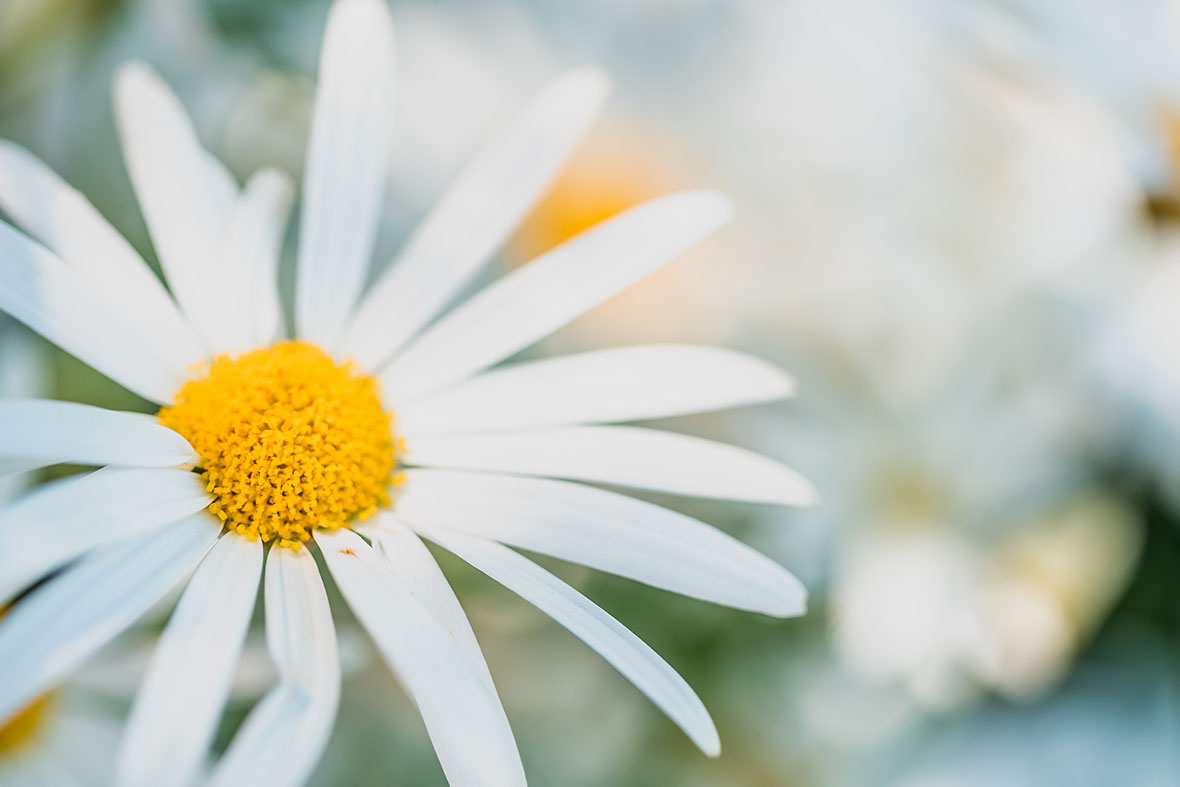Some flowers just make me smile, and the humble daisy is one of those. It’s almost impossible to resist these happy bushes, absolutely smothered in masses of blooms for such a long period from late winter into spring. They flower again in autumn, and sporadically throughout the year. All this with no pests or diseases to speak of, and no real maintenance requirements apart from an encouraging word and a bit of a trim and a feed every now and then!
The botanical name for daisies is Argyranthemum frutescens, and they are native to the Canary Islands.
Daisies range in colour from the classic white, through pale pink, dark pink to almost red, and yellows, including some bi-coloured varieties. Some grow to over a metre tall, and others form a cute little low-growing mound. The lace-like leaves may be fine and ferny, or shorter and broader. There are single flowers, doubles and semi-doubles, so whatever your preferences, there will be one to suit you.

Like pansies and violas, daisies are a cheerful little flower! A daisy in full bloom, or even just a couple of stems in a vase, is almost guaranteed to lift one’s spirits. They flower abundantly, making them ideal for kids’ gardens, and for cutting and bringing indoors.
The old fashioned marguerite daises grow about 1m tall and wide, with a slightly open habit. The newer cultivars have been bred to be shorter and more compact, flowering prolifically over a long period.
Osteospermums, commonly known as ‘African Daisies’, have daisy-like flowers and form a tough-as-nails groundcover. Their foliage is different from ‘real’ daisies, but the flowers look just like single daisies. They are commonly seen in shades of white, blue and purple, often with striking dark blue or purple centres. There are also cream, yellow, orange and terracotta forms which are worth trying. Some of these groundcover forms will be about 30-40cm tall and spread=ing, whereas others stay very flat and just hug the ground.
Daisies grow best in a well-drained, sunny position. They are not particularly fussy about soil type, but they will do better if they are fed and mulched regularly, and watered during dry times. The more compact varieties are well suited to growing in pots. Use a premium potting mix, and feed with a slow release fertiliser a couple of times a year.
Caring for your daisies is easy. A light trim after each major flowering will encourage new growth and more blooms. You can tip prune during the growing season to produce an even bushier, more compact plant that will in turn produce more flowers.
Daisies are rarely attacked by pests and diseases. They will keep performing for up to five years in your garden, with minimal attention. Of course, potted plants will require a bit more care, but are still remarkable easy.